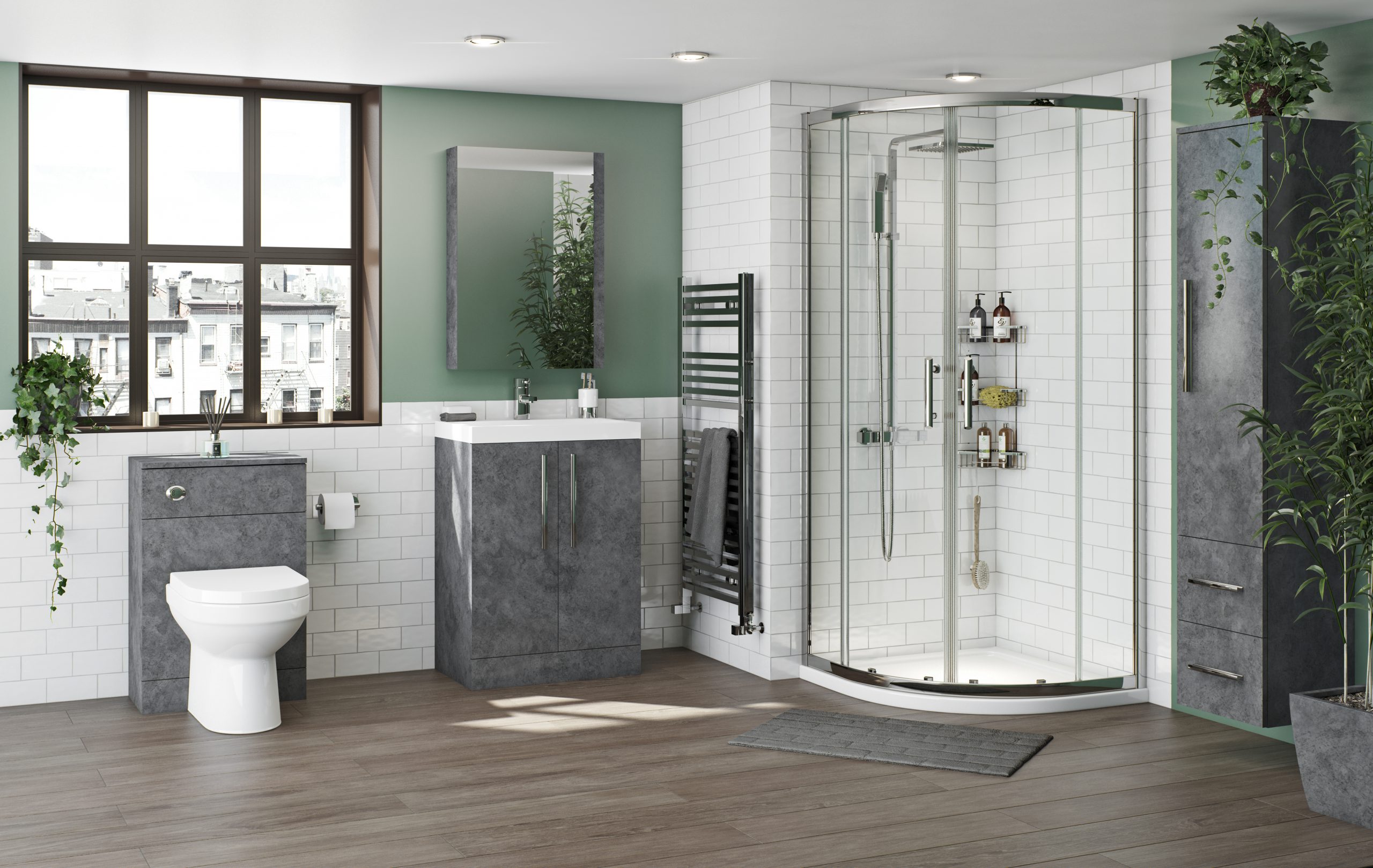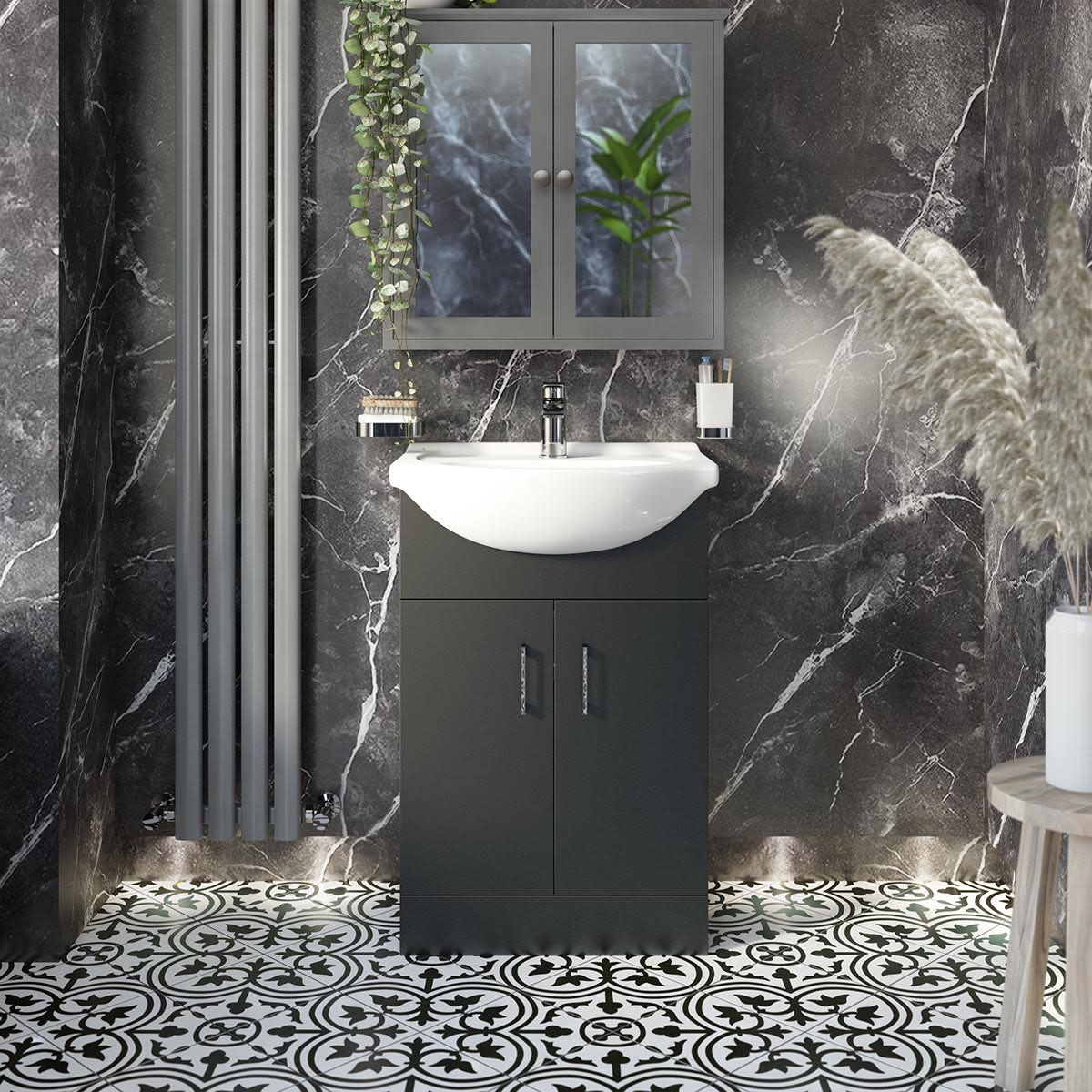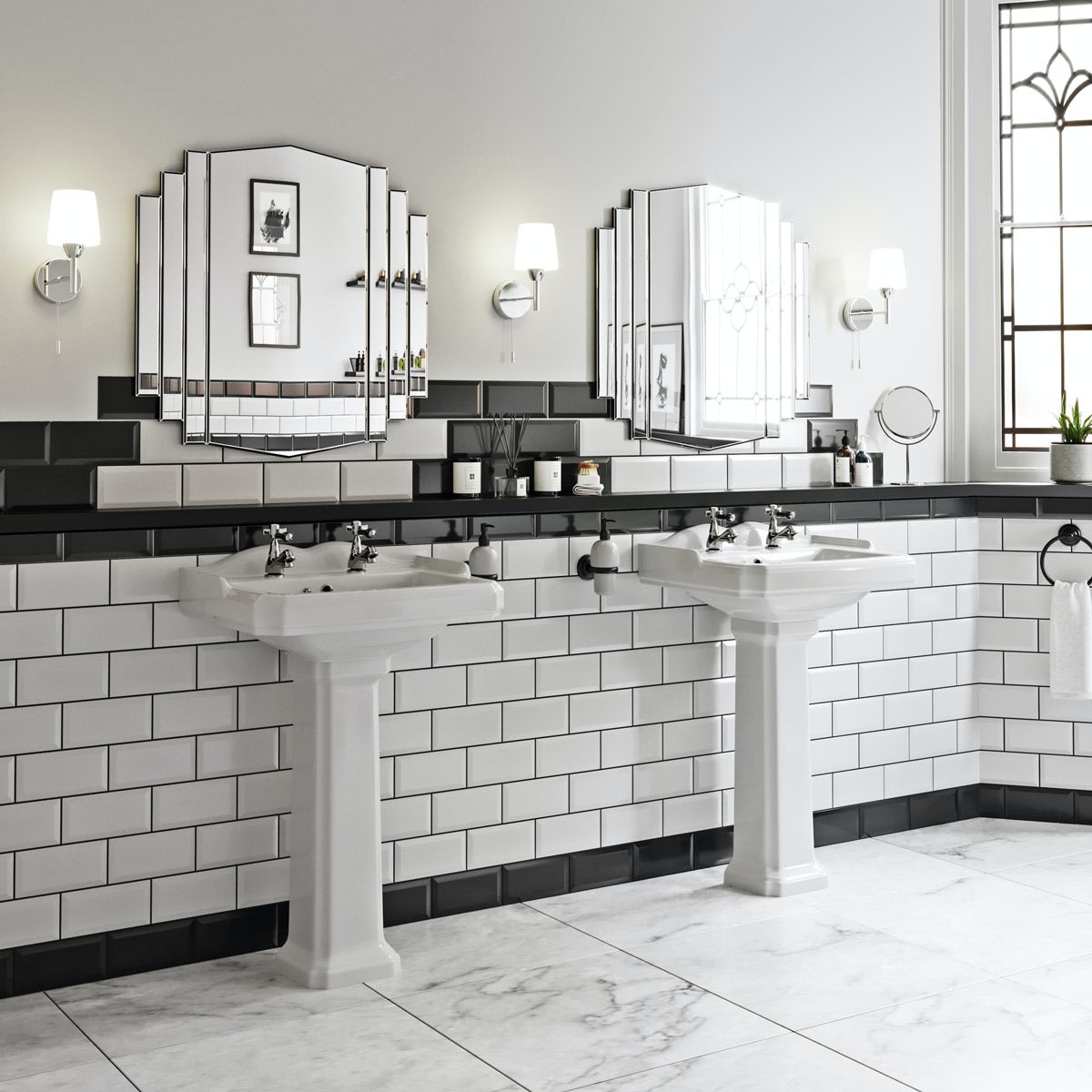We’ve all been there – dreaming of the spa-like retreat in our own bathroom. But when it comes to achieving that, things get a bit more complicated. You may be eyeing up DIY bathroom remodeling, as the cost savings and inspiration from home improvement shows have us all ready to get our hands dirty. But before you embark on your transformation, there are a few pros and cons you should consider. So here’s what you need to know about DIY Bathroom Remodeling – the good, the bad, and the ugly.
Quick Overview
Doing a bathroom remodel yourself can be an economical choice, as you can save money by buying the materials and not paying for labor. But you do run the risk of making mistakes, which can result in expensive repairs or replacements down the road.
The Benefits of DIY Bathroom Remodeling
DIY bathroom remodeling offers a number of benefits, from being able to express your own style and creativity to saving some money on labor costs. While it certainly takes more time and effort than hiring a contractor, those who are willing to invest their energy can be handsomely rewarded.
The main benefit of DIY projects is that you are able to control the design and style of your bathroom. With so many materials and fixtures available, it’s easy to personalize your space with a certain look or color. You are not only in control of the quality of the project, but also its affordability. By choosing pre-made elements such as vanities, countertops, flooring tiles and fixtures, you can easily stay within your budget while still having the satisfaction of completing your project yourself.
Additionally, DIY projects allow you to become more involved with the work process and learn some new skills along the way. With all the tutorials available online today, even novices can pick up enough information to lead them through their remodels successfully.
Finally, when it comes time for resale, home buyers will often prefer homes that have had renovations done by homeowners themselves because they know the details have been personally inspected and monitored closely throughout the process.
When it comes to pros and cons of DIY bathroom remodeling projects, ultimately the decision falls into the homeowner’s hands. It’s important to consider both sides carefully before jumping into any venture; DIY bathroom remodelers must be prepared to accept additional risks than the ones presented when hiring a professional contractor. Having said that, making an informed decision based on personal desires and expectations can yield positive results if given enough time and dedication.
To make sure your project runs as smoothly as possible though, taking proper time to plan is vital. In the following section we will discuss tips on how to properly plan out your DIY bathroom remodel as well as lay out an effective timeline for each task at hand.
Taking Time To Plan Your Project
Once you’ve decided to take on a DIY bathroom remodel, it’s important to effectively plan the project. Many do-it-yourselfers jump right into the project, only to find that their efforts are more laborious and costly than they had anticipated. A carefully planned project can help ensure that your efforts are effective and efficient.
On one hand, ample time for planning is essential for any DIY bathroom remodel in order for it to turn out as expected. Planning is essential for making sure that all necessary materials and tools are purchased ahead of time, as well as checking for any potential structural issues. Taking some extra time to collect design inspirations and create a detailed plan will ensure that the project goes smoother as well.
On the other hand, taking too much time planning a bathroom remodel may lead to wasted money and energy. Careful scrutiny is important while selecting materials and fixtures, but if you spend too long agonizing over choices, you may end up spending more money than was spent on research. It’s also important not to become bogged down with the details and lose sight of the overall goal of your project.
No matter how much or how little time you take planning your DIY bathroom remodel, it is essential to remember being flexible and adjusting your expectations based on your experience level and budget. Now that we have discussed taking time to plan your project, let’s move on to the next section about cost savings and skills!
Cost Savings & Skills
DIY bathroom remodeling can be a great way to save money while honing your home improvement skills. With the right tools, planning, and resources, it is possible to complete a lot of projects without having to hire an expensive contractor. Even small changes to tile, fixtures and other elements in the bathroom can make a world of difference without breaking the bank.
Costs savings can vary depending on how much of the project you undertake yourself and don’t underestimate how money can add up if you don’t plan properly. With any DIY project, there are a few essential steps that need to be taken into account: price comparison research, budgeting for unexpected expenses, and making sure that you have all necessary supplies on hand. While planning for these can help you keep costs down, there may be occasions where calling in an expert might still be needed (especially in safety-related projects).
There are also skills which need to be considered when deciding what kind of projects are feasible within a DIY bathroom remodeling job. It is important to assess your abilities to carry out the task at hand; things like electrical wiring or plumbing should not be undertaken by someone who does not have experience in those fields unless they are willing to do their research prior and accept that there may be mistakes along the way. Additionally, make sure that you’re following local codes and laws regarding building and installation as failure to do so could result in fines or other legal implications.
Ultimately, DIY bathroom remodeling can be an effective way to save costs and develop home improvement skills – as long as you know your limits and understand the risks of taking on projects above your capabilities. As with any home renovations, it is important to weigh the pros and cons before jumping into anything too ambitious. With that said, let’s turn now to exploring potential drawbacks of DIY bathroom remodeling.
Potential Drawbacks of DIY Bathroom Remodeling
One of the primary potential drawbacks of DIY bathroom remodeling is misjudging the amount of work involved. With all of the intricacies required to properly perform a remodel, it is easy for homeowners to underestimate the amount of labor and time that must be invested. Without enough time or effort, even minor changes can become complicated projects due to unexpected problems. For this reason, it is important for homeowners to underestimate the workload needed in order to plan accordingly. Additionally, it is a smart decision for homeowners to be familiar with any plumbing and electrical codes that are applicable to their situation; otherwise, mistakes could be costly if regulatory authorities are brought in due to safety hazards or other code violations.
Another potential setback of DIY bathroom remodeling is difficulty finding help information or assistance if something goes wrong. Professional contractors have access to resources and tools that may not be available to amateur remodelers. If something goes wrong, DIY bathroom remodelers may need to purchase additional supplies or hire professional help, which could end up costing more money than originally anticipated. Even if they can find instructions online or hire professionals on the spot, these costs must be taken into account when budgeting for the project.
Homeowners should also consider whether they are willing to take on full responsibility for any problems that arise during their bathroom remodels. DIY projects guarantee greater flexibility but can ultimately come with a greater risk as well; by attempting a project without any prior experience, DIYers may not know how to effectively address issues as they arise and reformat their plans accordingly. Ultimately, amateur remodelers should realistically assess their own ability level and ask themselves whether completing such a task is worth the effort and risk associated with solving any challenges which may appear along the way.
Though there are potential drawbacks of DIY bathroom remodeling, it does not mean that such projects cannot be completed successfully; successful completion simply takes more research, time and effort than hiring a professional contractor would involve. With careful planning and research up front, however, many homeowners have achieved beautiful results with only minor setbacks or hiccups along the way. The next section will address how to source quality materials in order to maximize success at every step of a DIY bathroom renovation project.
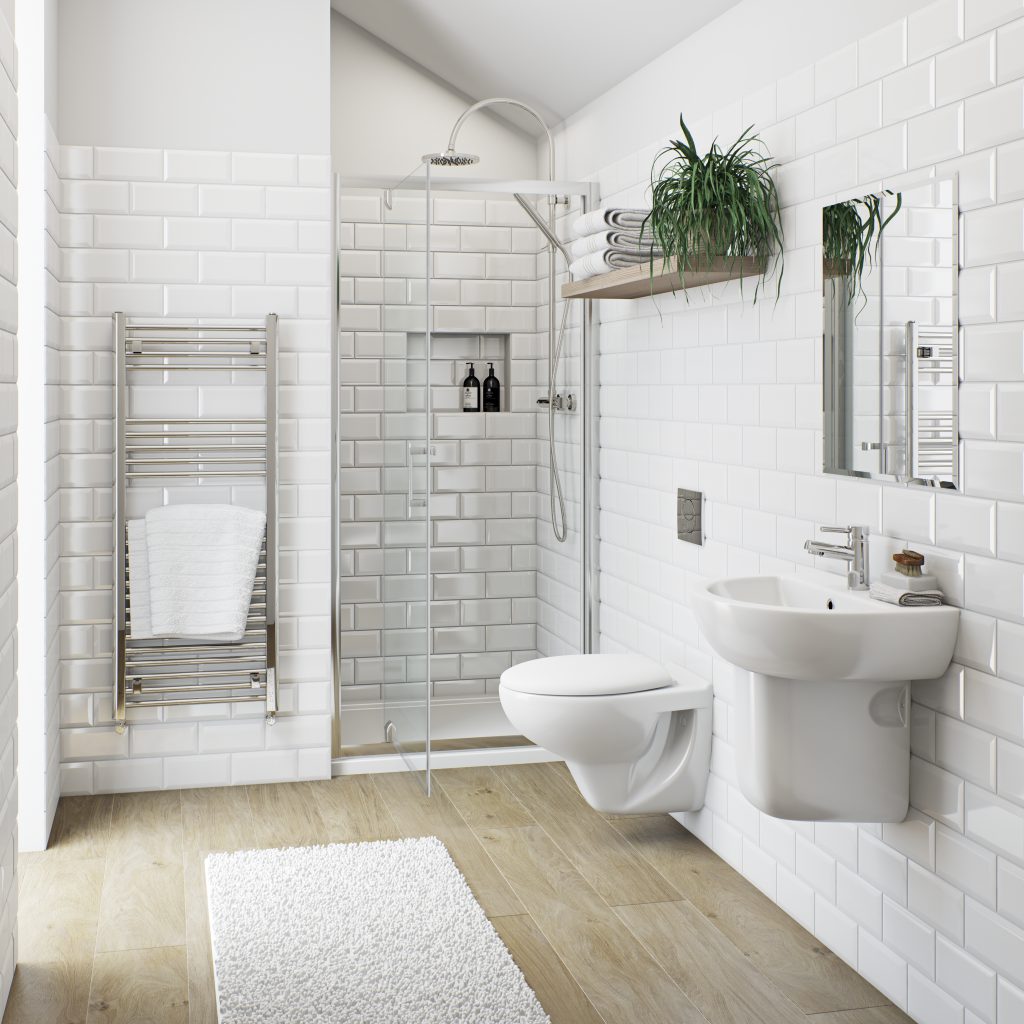
Finding the Right Materials & Tools
When it comes to DIY bathroom remodeling, selecting the right materials and tools is essential for a successful outcome. On one hand, having the correct materials and tools can save time, money, and lead to a job completed with quality. However, on the other hand, choosing the wrong materials or tools could result in improper installation or, even worse, potentially create hazardous conditions requiring costly repairs.
When looking for materials, research product options and read reviews carefully to get an accurate idea of what you need. Decide between certain products depending on budget, performance expectation, durability, ease of installation and maintenance needs. Quality should always come first when considering which materials to purchase so that your bathroom remodeling lasts for years to come.
In terms of tools and equipment needed for DIY bath remodeling, having the right equipment can often mean the difference between a good job and a sloppy one. Make sure that you have all of the necessary basic tools including power saws, table saws and circular saws; drills; tape measures; levels; sanders; chisels; screwdrivers; wrenches; trowels; grinders; pliers; hammers; taping knives; utility knives; carpenter’s squares; and sledgehammers. Safety should also be taken into consideration when selecting and using such tools. Always make sure you are wearing eye protection (goggles) while cutting or drilling as well as non-slip gloves while handling sharp objects. Additional protective clothing such as dust masks could also be beneficial when using any type of power tool.
Now that you know what materials and tools to consider for your DIY bathroom remodeling project, let’s move onto the next section about The Remodeling Process – where we’ll cover step-by-step instructions for completing a truly successful bathroom renovation!
The Remodeling Process
DIY bathroom remodeling can be a daunting task, but also very rewarding if you do it correctly. On the one hand, it offers homeowners the chance to design and customize the look of their bathroom with lower costs than hiring a pro. On the other hand, it requires extra dedication, time, and expertise to make sure that you have all of the supplies and understand safety regulations. Following the correct steps during your remodel is essential for achieving the best results.
For those who are not well-versed in construction or plumbing, it’s important to understand what goes into properly completing a DIY remodeling project before diving in head first. It’s recommended to consult an expert on any complex tasks like repairing or replacing walls, plumbing fixtures and electrical sockets. Though it might seem intimidating, there are plenty of home improvement resources available online—videos and tutorials that provide step-by-step instructions on various aspects of bathroom remodeling, along with helpful tips on avoiding costly mistakes.
When DIYers are planning out their project they must consider how disruptive certain steps will be while they work—and remember that nothing should ever compromise safety standards during the process. Taking preventive measures such as turning off power at the breaker box before beginning work on wiring or outlets is essential for protecting both your health and possessions from harm.
The next section will discuss basic steps to take during a DIY bathroom remodeling project—as well as steps to avoid—in order to ensure accuracy and safety while saving time and money.
Basic Steps and Steps to Avoid
It’s essential to understand the basic steps and steps to avoid when considering a DIY bathroom remodeling project. Generally, you want to start by planning, with a focus on budgeting, design and timing. This should include everything from permits, labor and materials. For example, creating a wish list and budget can help inform decisions about plumbing, fixtures, storage and other related components.
If this is your first time tackling a DIY bathroom remodeling job, it’s highly recommended to practice caution by researching local building codes. Additionally, special care should be taken when looking into advanced tasks that require working with electrical wiring, water supply lines or structural walls. An experienced contractor might be hired for more difficult tasks such as floor tiling or installation of cabinetry.
In any case, a potential DIYer may want to consider taking on smaller projects at first such as changing out fixtures or cabinet hardware. These types of jobs might provide a sense of accomplishment without potentially being too risky or complex. Extensive preparation is key in any major DIY project. Taking extra time to carefully map out plans before beginning can save time in the long run and reduce the potential for costly mistakes.
Finally it’s important to consider the advantages and disadvantages of using a professional contractor versus investing in do-it-yourself projects. Next we will consider the pros & cons of using a contractor for bathroom remodeling.
Key Takeaways
When considering a DIY bathroom remodeling project, ample preparation is necessary. This should include researching local building codes, carefully budgeting and planning for permits, labor and materials, as well as creating a wish list. Advanced tasks such as tiling or electrical work are best left to experienced contractors, while smaller projects such as changing fixtures or cabinet hardware may be suitable for beginners. Careful planning before beginning can save time in the long run and guard against costly mistakes. Finally, it is important to weigh the costs and benefits of using a professional contractor versus doing the job oneself.
Pros & Cons of Using a Contractor
DIY bathroom remodeling may seem like a more cost-effective option, but it can be risky if you don’t possess the necessary skills and knowledge. Hiring a professional contractor to help you with your bathroom remodel can be a great way to ensure the job is well done. However, there are pros and cons of using a contractor.
The Pros:
One of the advantages of hiring a contractor is that they typically will be able to provide high-quality materials and components for your bathroom remodel. Professional contractors often have access to wholesale prices that are not available to the general public. Additionally, a skilled contractor will be able to complete the project within an appropriate timeline with fewer delays due to inexperience or mistakes. Finally, contractors have experience dealing with obstacles and problems that arise during a remodel which might be difficult for an inexperienced DIYer.
The Cons:
However, it is important to note that hiring a contractor comes at a cost. Professional services will typically require more money than doing the project yourself. Additionally, depending on the complexity of your project, it could take longer than expected as contractors have several projects running at any given time. Furthermore, there is also a risk that you might be getting poor quality work when selecting an inexperienced contractor who is offering too low of a price. Finally, finding licensed and insured contractors can sometimes be difficult and involve vetting many companies before selecting the right one for your job.
In conclusion, deciding between doing a DIY bathroom remodel or hiring a professional contractor can be challenging depending on your budget and timeline considerations. The next section will discuss in greater detail how to decide this question by exploring different factors that should be considered when making this choice.
How to Decide the DIY vs. Professional Question
Deciding between a DIY project or hiring a contractor is a dilemma many homeowners face when embarking on a bathroom remodel. With so much variance in experience, available time, and resources, the decision can often be quite daunting. Here are some tips on how to assess which route best suits your project:
Time Investment: The first factor to consider is the amount of time you are willing and able to invest into the project. If you have limited time because you feel the project needs to get done sooner rather than later, it may be more sensible to hire a contractor. Likewise, if your time is limited because you have other commitments, such as work or childcare duties, this should also influence your decision.
Experience: Your level of experience and comfort with power tools, plumbing and tile installation all need to be taken into consideration when making this decision. If these tasks are daunting or unclear to you, it is strongly recommended that you hire an experienced contractor. Although getting an estimate from a professional may cost money upfront, it could save you thousands in potential damages that could arise from inexperienced DIY work.
Costs: After considering your level of experience and the amount of available time for the renovation process, it’s important to evaluate both price points thoroughly. Depending on the complexity and size of your remodel project, contractors may often offer discounted deals for full renovations vs piece-by-piece contracting. DIY projects also have their own expenses associated with materials that have been carefully researched ahead of time. Depending on the quality of materials chosen, DIY projects can sometimes turn out to be more costly than professional contracting options at times. Assess all options carefully before making any decisions.
Ultimately an assessment combining both factors will help inform your decision surrounding a bathroom remodel – whether completing it yourself or hiring a contractor makes more sense financially and pedagogically. However, remember no matter what route chosen there will always be risks involved; so make sure to weigh each option’s pros & cons before moving forward with any kind of bathroom remodeling endeavor.
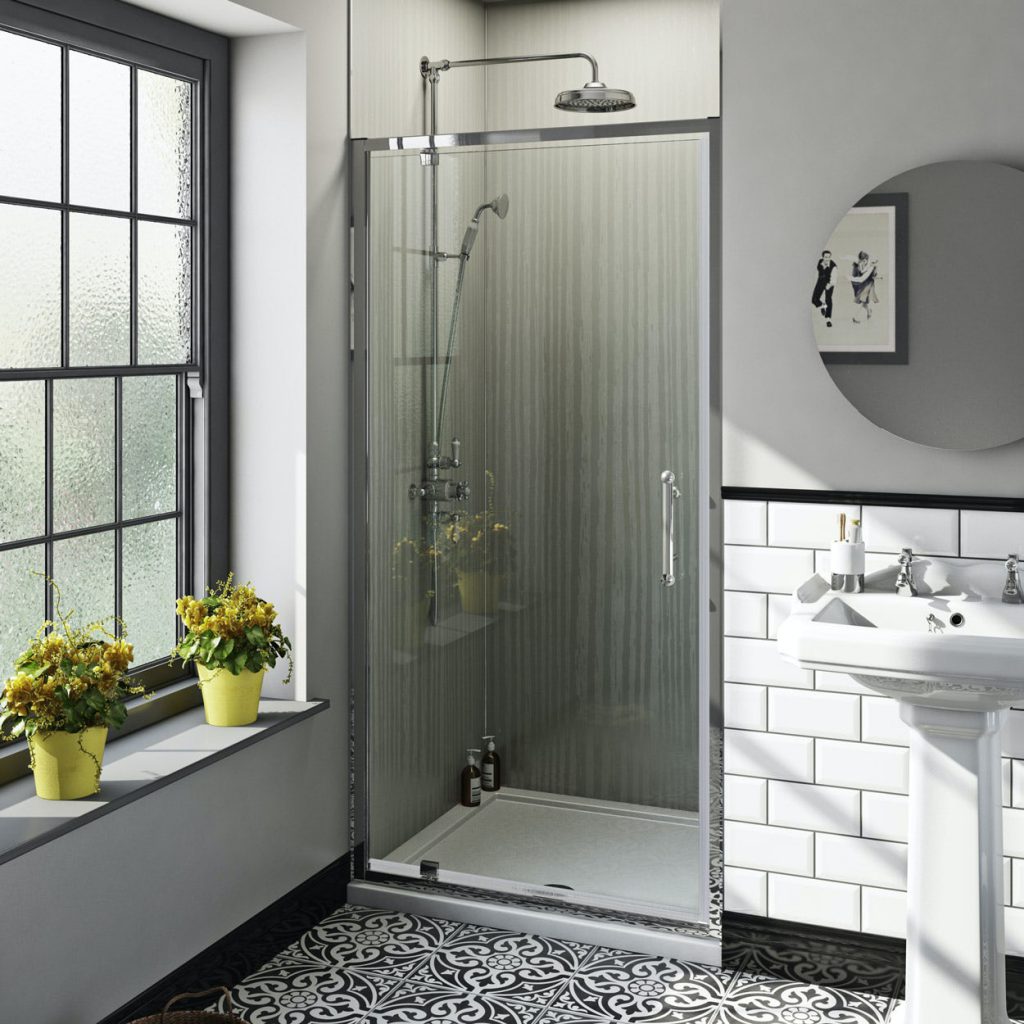
Responses to Frequently Asked Questions with Detailed Explanations
What costs should I consider when tackling a DIY bathroom renovation?
When considering a DIY bathroom remodel, there are several costs to consider. First and foremost is the cost of supplies and materials. This includes things like tile, fixtures, toilets, sinks, showers, caulk, grout, and paint. You will also need tools such as hammers, screwdrivers, saws and other construction items. Additionally, you should factor in labor costs if you plan on hiring professionals to assist with the job. Finally, be sure to allocate money for potential unforeseen costs associated with any bathroom remodel project. Taking into account all these factors can help ensure that your DIY bathroom remodeling project goes smoothly and stays within budget.
How much time should I anticipate a DIY bathroom renovation taking?
It depends on the scope of your project and the amount of time you can devote to it, but the average DIY bathroom remodel can take anywhere from a few days to several weeks. As a rough estimate, allow anywhere from 1-2 days for minor upgrades such as repainting or replacing light fixtures, 3-5 days for more involved tasks such as tiling and installation of fixtures, and up to 1-2 weeks if more complex projects such as installing new plumbing are involved. Additionally, factor in extra time for possible delays due to getting supplies affecting the timeline. The most important thing is that you plan your project ahead of time and prioritize specific tasks each day so that you don’t become overwhelmed during the planning and execution stages.
What type of skills or experience do I need for DIY bathroom renovation?
When it comes to DIY bathroom remodeling, there is no “one-size-fits-all” answer when it comes to the skills and experience required. However, basic handyman skills are almost always necessary. These include being able to use tools safely, having a general understanding of home repairs and maintenance, and knowing how to read plans and diagrams. Depending on the project, you may need specific experience in plumbing or electrical work, tiling, painting, etc.
It is important to assess your own abilities before embarking on a DIY bathroom remodeling project. Projects such as re-tiling floor or replacing an old bathtub may require more specialized skills and tools than other simpler projects. Additionally, having a general knowledge of building codes can help you avoid major legal issues down the road.
Ultimately, anyone who is willing to put in time and effort into researching their project beforehand has the potential for a successful DIY bathroom remodel. With proper planning and preparation, even novice DIYers can successfully complete their projects with minimal problems!

